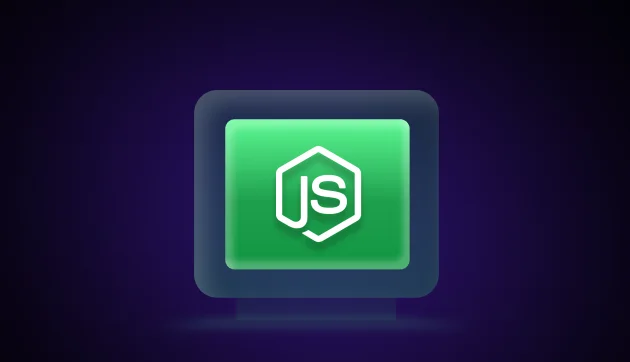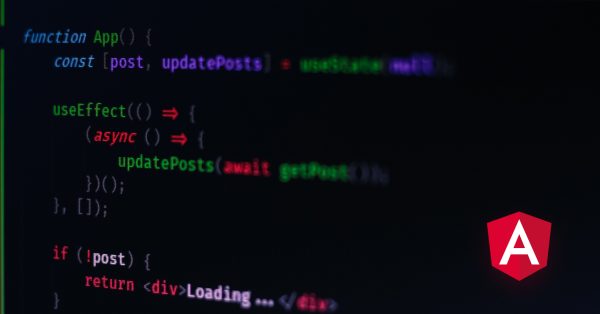![Job Description of a Backend Developer: A Simplified Guide [2025] 1 Post thumbnail](https://www.guvi.in/blog/wp-content/uploads/2024/02/feature_image-4-1.webp)
Job Description of a Backend Developer: A Simplified Guide [2025]
Mar 18, 2025 5 Min Read 4276 Views
(Last Updated)
The world of full-stack development is so big that it has been divided into frontend and backend development. With this, you can easily choose the concepts that you like and decide where you belong to.
If you choose to become a backend developer, then there are certain things that you must know especially the job description of a backend developer. Knowing the job description of a backend developer as well as the roles and responsibilities of a backend developer, you can understand what you are up for, and that’ll help you enhance your skillset to a great extent.
In this article, that is what you are going to learn – the job description of a backend developer. By the end of this article, you will be equipped with all the required knowledge that you need to pursue backend development.
So, sit tight and read till the end. Let’s get started.
Table of contents
- Understanding the Concept of Backend Development
- What are the Roles and Responsibilities of a Backend Developer?
- Roles and Responsibilities of a Backend Developer:
- Job Description of a Backend Developer
- Technical Expertise:
- Database Management:
- API Design & Integration:
- Understanding of Front-end Technologies:
- Problem-solving Skills:
- Security Measures:
- Collaboration and Communication:
- Adaptability and Continuous Learning:
- Project Management Skills:
- Conclusion
- FAQs
- Why is backend development crucial for websites?
- What languages are commonly used in backend development?
- Can a website function without backend development?
- How does backend development support frontend development?
- What makes a successful backend developer?
Understanding the Concept of Backend Development
![Job Description of a Backend Developer: A Simplified Guide [2025] 2 Understanding the Concept of Backend Development](https://www.guvi.in/blog/wp-content/uploads/2024/03/the_image_should_have_a_person_trying_to_learn_about_backend_development.webp)
Before you indulge yourself with the job description of a backend developer, let us first understand what backend development truly means.
Let us compare a website with a restaurant, imagine that you’re at a restaurant and you are observing things around you. If you like the ambiance, the setup, the colors, and everything that you see, then that is the magic of frontend development.
Now, if you like your food which is made in the kitchen which you cannot see, then that is what the backend development is. The backend is the kitchen and everything that happens there to prepare your food.
In the digital world, backend development is like the kitchen’s activities. It’s all the work that goes on behind the scenes to make websites and apps function. This includes storing data, processing it, and making sure everything runs smoothly.
As a backend developer, you are the chef and kitchen staff who make sure that the food is cooked up just right. You write code that helps store information securely, like account details on a social media site, and make sure that when a user asks for something, like clicking a button to see a friend’s photos, the website or app can get that information and show it to them quickly and accurately.
The roles and responsibilities of a backend developer primarily happen in the background to ensure that everything you do online is seamless, quick, and exactly what you asked for.
If you want to pursue backend development as a career, go through a backend development roadmap that provides you with all the highs and lows that you need to be prepared for.
Learn More: Frontend vs Backend Development: Top 7 Differences
What are the Roles and Responsibilities of a Backend Developer?
![Job Description of a Backend Developer: A Simplified Guide [2025] 3 Roles and Responsibilities of a Backend Developer](https://www.guvi.in/blog/wp-content/uploads/2024/03/what_are_the_roles_and_responsibilities_of_a_backend_developer_.webp)
Before we address the elephant in the room, that is, the job description of a backend developer. Let us first see about the roles and responsibilities of a backend developer.
Also Find Out What Does a Top Backend Developer Do? The Ultimate Guide
Before we move to the next section, if you want to learn more about backend development, consider enrolling for a professionally certified online full-stack web development course by a recognized institution that can also offer you an industry-grade certificate that boosts your resume.
Let us now see the roles in the roles and responsibilities of a backend developer:
Roles and Responsibilities of a Backend Developer:
1. System Architect
The first and most famous role in the list of roles and responsibilities of a backend developer is system architect. To explain this role simply, think of this person as the one who draws the blueprint for any website.
This role requires a visionary mind, capable of foreseeing potential bottlenecks that could cause disruptions in the system and designing scalable systems that stand the test of time and user growth.
2. Database Administrator
The next role we have is the Database Administrator, the guardian of all our data. They keep all the information safe and organized. Whether it’s your photos, messages, or favorite songs, they make sure everything is where it should be and that only the right people can access it.
They’re responsible for managing the vast seas of information, ensuring data is securely stored, easily retrievable, and neatly organized. They use tools like MySQL to organize data.
Learn: 10 Best Database Management Systems For Software Developers
3. API Developer
To understand the role of an API developer, imagine that you have two friends who speak different languages, and you’re the only one who can understand both.
The API Developer does something similar by helping different parts of the internet talk to each other. So, when you’re checking the weather on your phone, they’re making sure the app can get the info from a weather database far away.
Also Read: Use ReactJS to Fetch and Display Data from API – 5 Simple Steps
4. Security Engineer
Security engineer plays an important role in backend development and this is considered to be one of the important jobs in the roles and responsibilities of a backend developer. Their job is to make sure all the data and information are safe from anyone trying to steal or damage it.
5. Cloud Solutions Developer
These cloud solutions developers specialize in developing and deploying applications in the cloud, optimizing for scalability, reliability, and performance. Whether it’s AWS, Azure, or Google Cloud, they easily navigate these platforms, ensuring that applications can scale up to meet demand without missing a beat.
Must Explore: AWS vs Azure vs Google Cloud: Comparing the Top Cloud Service Providers
6. Performance Engineer
The Performance Engineer is the one who is obsessed with speed and efficiency. They dive deep into the application, identifying bottlenecks and optimizing code to ensure lightning-fast performance.
They tune and tweak the website or app to make sure it loads quickly, just like a mechanic tuning a race car to win the race. Nobody likes waiting, and it’s their job to make sure you don’t have to.
7. DevOps Engineer
Lastly in our list of roles in the roles and responsibilities of a backend developer is the DevOps Engineer who is the great unifier, bridging the gap between development and operations.
They help the people creating the app and the ones maintaining it to communicate and solve problems quickly. They focus on automating the deployment and operation of applications, ensuring that new features can be released quickly and reliably.
This role requires a blend of technical skills, an understanding of software development practices, and an ability to manage complex systems. They keep the gears of the development cycle turning smoothly, enabling rapid innovation and deployment.
Each role within the roles and responsibilities of a backend developer plays a critical part in the creation, maintenance, and evolution of web applications.
8. Data Traffic Control
Since there are a gazillion websites out there on the internet, ever wondered who manages all that data traffic? Well, you guessed it right, it is our backend developers.
Every time users click a link or submit a form on a website, they’re sending a request through the vast network of the internet. As a backend developer you have to ensure that their request finds its way to the right server, retrieves or updates the information they need, and then sends it back to them, just like a traffic controller ensures cars get from point A to point B without crashing into each other.
Read More: Backend Developer Salary in India & USA
Job Description of a Backend Developer
![Job Description of a Backend Developer: A Simplified Guide [2025] 4 Job Description of a Backend Developer](https://www.guvi.in/blog/wp-content/uploads/2024/03/job_description_of_a_backend_developer-1.webp)
Let us now understand the job description of a backend developer one by one starting with the expectations that a company has for a candidate applying for backend development:
When a company is on the lookout for a backend developer, they have a checklist of expectations that go beyond just technical skills.
If you’re eyeing a role in backend development, understanding these expectations and the job description of a backend developer can significantly boost your chances of landing the job. Let’s dive into what companies typically seek in a backend developer candidate.
![Job Description of a Backend Developer: A Simplified Guide [2025] 5 Companies requirement](https://www.guvi.in/blog/wp-content/uploads/2024/03/job_description_of_a_backend_developer-2.webp)
1. Technical Expertise:
First and foremost, companies expect you to have a solid grasp of backend programming languages such as Java, Python, Ruby, Node.js, or .NET.
Understanding backend frameworks relevant to these languages, like Django for Python or Spring for Java, is also crucial.
2. Database Management:
Next in the job description of a backend developer, they check for your efficiency in handling data storage solutions. Whether it’s SQL databases like PostgreSQL or MySQL, or NoSQL databases such as MongoDB or Cassandra, knowing how to design, query, and manage data is key.
Companies look for developers who can structure databases that are scalable and performant.
3. API Design & Integration:
Developing APIs (Application Programming Interfaces) is a significant part of the job description of a backend developer. Companies expect you to create APIs that front-end applications can use to communicate with the backend logic.
4. Understanding of Front-end Technologies:
While your focus is on the backend, having a basic understanding of front-end technologies (HTML, CSS, JavaScript) is beneficial for the job description of a backend developer. This knowledge helps in aligning backend services with the front-end part of the application, ensuring a seamless user experience.
5. Problem-solving Skills:
Backend development often involves tackling complex problems and finding efficient solutions. Companies value developers who can think critically, troubleshoot issues, and come up with innovative solutions to technical challenges.
6. Security Measures:
With increasing cyber threats, security is paramount. You should be familiar with implementing security protocols, and data protection measures, and understanding vulnerabilities.
Knowledge of authentication mechanisms, securing data transmissions, and compliance (such as GDPR for user data protection) is highly regarded in the job description of a backend developer.
7. Collaboration and Communication:
Backend development is not a solo act. Companies look for candidates who can effectively collaborate with front-end developers, designers, product managers, and other stakeholders.
8. Adaptability and Continuous Learning:
The tech field is ever-evolving, and staying updated with the latest technologies, tools, and best practices is crucial for any backend developer. Companies expect you to be adaptable and willing to learn new languages or frameworks as needed.
9. Project Management Skills:
While not a primary requirement, having a basic understanding of project management principles can be a plus. This includes familiarity with Agile methodologies, version control systems like Git, and project management tools.
Pro Tip: The job description of a backend developer should be tailored from time to time. When preparing for an interview, it’s beneficial to research the specific technologies and frameworks used by the company, understand their product and industry, and be ready to discuss how your skills and experiences align with their needs. Tailor your preparation to the company’s context to demonstrate your readiness to contribute effectively to their projects.
If you want to learn more about the job description of a backend developer, then you must sign up for the
GUVI’s Full Stack Development Course gives you in-depth knowledge of the practical implementation of backend development through various real-life FSD projects.
Conclusion
In conclusion, learning the roles and responsibilities of a backend developer is vital to the job description of a backend developer.
Backend developers also serve as the unsung heroes who manage data traffic, protect sensitive information, and maintain the health of applications through expert debugging.
If you want to take up the path of a backend developer, make a note of all the roles and responsibilities of a backend developer mentioned in this article. On top of that, you have to work tirelessly to understand the job description of a backend developer and ace the field.
Also Read: Backend Developer Interview Questions and Answers: A Resourceful Guide [2025]
FAQs
It ensures that data is processed correctly, stored securely, and retrieved efficiently, enabling seamless user experiences and reliable functionality on the front end.
Languages like Python, Java, Ruby, and Node.js are popular choices due to their scalability, performance, and community support.
Simple, static websites can, but dynamic and interactive sites rely on backend development for data management, user interaction, and executing business logic.
Backend development provides the data and services needed for the front end to create interactive and dynamic user experiences.
A successful backend developer has strong problem-solving skills, proficiency in backend languages and technologies, a good understanding of databases and API development, and the ability to design scalable and secure systems.






























![A Comprehensive Guide to Microservices Architecture and Implementation [2025] 12 Feature Image - A Comprehensive Guide to Microservices Architecture and Implementation](https://www.guvi.in/blog/wp-content/uploads/2024/03/feature_image-1-1.webp)

Did you enjoy this article?